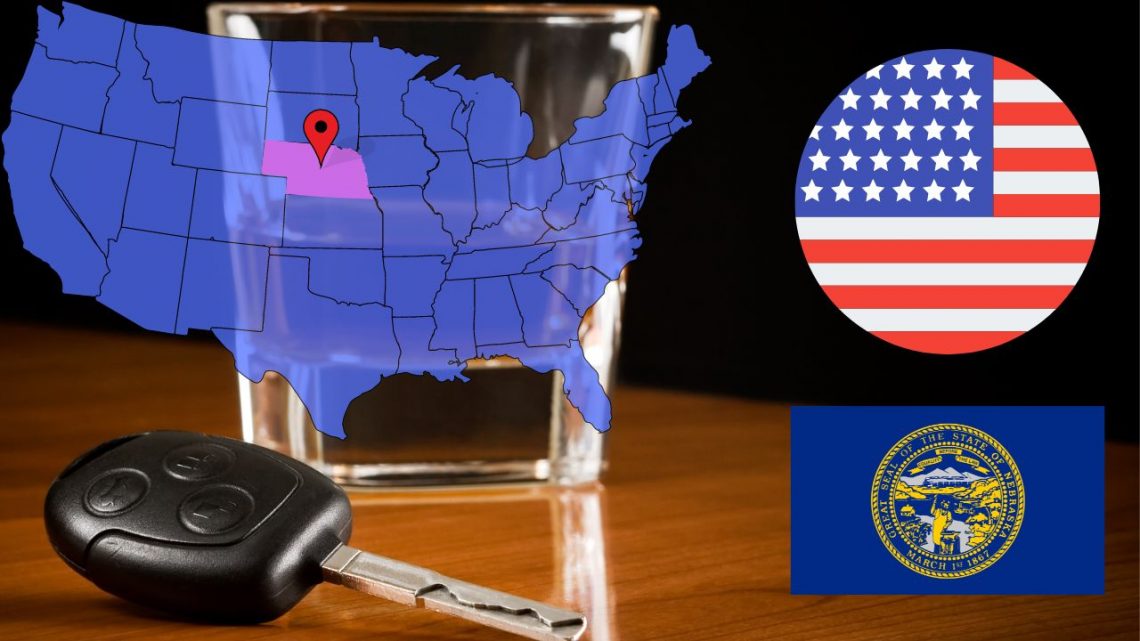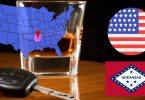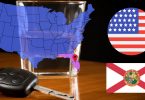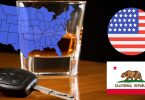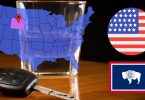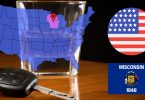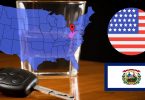In Nebraska, the maximum permissible blood alcohol concentration (BAC) stands at 0.08%, equivalent to 80 milligrams of alcohol per 100 milliliters of blood. However, drivers can be prosecuted for driving under the influence if they show signs of impairment at BAC levels below this threshold
Please be aware that the purpose of this post is to raise awareness of Nebraska’s drunk driving laws. This website does not support or encourage intoxicated driving in any state or region.
What is the legal alcohol limit for driving in Nebraska?
In Nebraska, the legal alcohol limit for driving varies depending on the driver’s category. The state enforces specific blood alcohol concentration (BAC) limits to ensure the safety of all road users. Below are the BAC limits for different categories of drivers:
- Regular Drivers: The legal BAC limit is 0.08%. This applies to most drivers operating personal vehicles.
- Commercial Drivers: For those holding a commercial driver’s license, the legal limit is reduced to 0.04%, reflecting the higher standards expected due to the nature of their vehicle operation.
- Minors (Under 21): It is illegal for minors to drive with any detectable amount of alcohol in their system, emphasizing a zero-tolerance policy for underage drinking and driving.
Drink and Drive Penalties and Punishments in Nebraska
In Nebraska, the consequences for driving under the influence (DUI) of alcohol or drugs are determined by the specifics of the offense, including the driver’s blood alcohol content (BAC) at the time of arrest and their previous driving record. The state’s DUI laws mandate strict penalties for offenders, aiming to reduce the incidence of drunk driving and enhance road safety. Below is a summary of the key penalties and punishments as outlined in Nebraska’s DUI regulations:
- First-Time Offenders: Individuals without prior convictions face a Class W misdemeanor charge. They are subject to a six-month license revocation, during which they must apply for an ignition interlock permit and install an ignition interlock device on their vehicles. If given probation, the license revocation period is 60 days, plus a mandatory $500 fine and either a two-day jail sentence or 120 hours of community service.
- High BAC Offenders (First Offense): For those with a BAC of 0.15% or higher, the revocation period extends to one year, with similar requirements for an ignition interlock device.
- Second-Time Offenders: Repeat offenders receive an 18-month license revocation, with a 45-day no-driving period, followed by a requirement for an ignition interlock device for at least one year. Additional penalties include a $500 fine and either a 10-day jail sentence or 240 hours of community service.
- Third-Time Offenders: These individuals face a 15-year license revocation. If the offense involves a BAC of 0.15% or higher or refusal to undergo a chemical test, the classification escalates to a Class I misdemeanor or a Class IIIA felony, with increased fines and mandatory jail time.
- Fourth or Subsequent Offenders: Offenders with four or more prior convictions are charged with a Class IIA felony, facing a minimum of two years’ imprisonment and a 15-year license revocation. The penalties intensify if the current violation includes a high BAC level or refusal to submit to testing.
The above summary encapsulates the structured approach Nebraska takes towards penalizing DUI offenses. It’s important to note that the specifics can vary based on individual circumstances, and the court has discretion in applying these laws. For the most current information and detailed legal advice, individuals are strongly encouraged to consult the official state website of Nebraska. This resource provides up-to-date guidelines and legal statutes related to DUI offenses and penalties, ensuring that residents and visitors are fully informed about the state’s driving laws.
How to Calculate Your Blood Alcohol Content (BAC) in Nebraska
In Nebraska, the legal limit for blood alcohol content (BAC) is 0.08% for regular drivers, 0.04% for commercial drivers, and for minors (under 21), any detectable amount of alcohol is illegal. Law enforcement officials use various methods to determine a driver’s BAC level, primarily through chemical tests such as breathalyzers, blood tests, and sometimes urine tests. These tests are designed to accurately measure the alcohol concentration in one’s system to enforce DUI laws effectively.
If you’re concerned about staying within the legal limits, there are a couple of approaches you can take to estimate your BAC before deciding to drive:
- Use a High-Quality Alcohol Breathalyzer: As an experienced phlebologist, I recommend the BACtrack S80, which is known for its professional-grade accuracy. This device is DOT & NHTSA approved and FDA 510(k) cleared, making it one of the most reliable breathalyzers on the market. Keeping a BACtrack S80 in your car can be a practical measure, as it provides a quick way to assess your BAC, helping you make informed decisions about driving after consuming alcohol. It’s important to remember that individuals often misjudge their level of impairment, and having a reliable device can prevent the risk of driving under the influence.
- Use an Online BAC Calculator: Together with other phlebologists and web developers, I’ve developed an online BAC calculator. This tool takes into account various factors such as your weight, the type and amount of alcohol consumed, and the time frame over which it was ingested to estimate your BAC level. It’s a convenient way to get a rough idea of your alcohol levels, especially when you’re away from your personal breathalyzer device.
While both of these methods can offer valuable insights into your BAC level, it’s crucial to understand that they do not provide 100% accurate results. Factors like metabolism, food intake, and individual health conditions can influence your actual BAC. Therefore, these tools should be used as guidelines to help you make safer choices, not as definitive measures of your ability to drive legally.
Remember, the safest approach is always to avoid driving if you’ve consumed any alcohol, especially if you’re unsure of your BAC level. Utilizing a breathalyzer or an online BAC calculator can help you understand your limits and potentially prevent the consequences of impaired driving. Always prioritize safety and adhere to the legal BAC limits set by Nebraska law to ensure your wellbeing and that of others on the road.
Ways to Avoid Driving with a High BAC in Nebraska
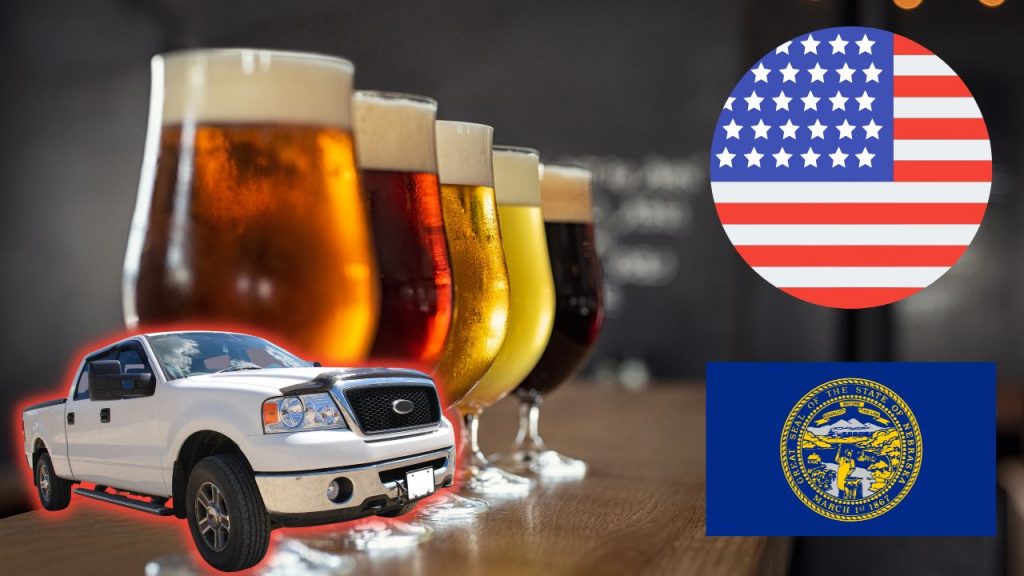
Driving with a high blood alcohol content (BAC) is dangerous and illegal in Nebraska, as in the rest of the United States. With the legal limit set at 0.08% for most drivers, it’s crucial to make responsible choices to ensure you and others on the road remain safe. Fortunately, there are convenient alternatives to driving under the influence:
- Utilize Ride-Sharing Apps or Local Taxi Services: One of the most straightforward ways to avoid driving after drinking is to use ride-sharing apps like Uber or Lyft. These services offer a convenient and safe way to get home at any time of the day. For those who prefer traditional taxis, local companies such as City Taxi Inc. in Omaha or Triple D City Car Service in Lincoln provide reliable transportation options. These services can be easily contacted through phone calls or their respective websites, ensuring you have a safe ride home.
- Order a Designated Driver Service: If you find yourself having driven to a location and then consuming alcohol, you might be concerned about leaving your car behind. In such cases, designated driver services are a fantastic solution. Services like SAFE RIDE HOME in Omaha or OMALiNK Shuttle and Limousine Service in Lincoln offer to drive you home in your own car. This way, you won’t have to worry about retrieving your vehicle the next day. A simple online search for “designated driver service” along with your city’s name should provide you with options available in your area.
Both of these alternatives not only help in avoiding DUI charges but also play a significant part in reducing the risk of accidents caused by impaired driving. Planning ahead is key; if you anticipate drinking, decide beforehand on how you will get home safely. Whether it’s booking a ride through an app or arranging for a designated driver service, taking these steps can help ensure that you and others on the road stay safe.
Sticking to DUI Laws in Nebraska: Sad Statictics
Driving under the influence (DUI) is illegal in Nebraska, with strict laws enforced to combat impaired driving. In 2020, Nebraska reported 213 accidents attributed to drunk driving, with 31% involving drivers with a BAC over the 0.08% legal limit. To prevent DUI incidents, always check your BAC with a reliable alcohol breathalyzer before considering driving.
Opt for safer alternatives like Uber, taxis, or other designated driver services instead of driving yourself if you’ve been drinking. For accurate information on DUI laws and safe driving practices, refer to Nebraska’s official state website.
Remember, alcohol impairs judgment and motor skills, making driving unsafe even at low levels of consumption. Always err on the side of caution and choose alternate transportation if there’s any doubt about your sobriety. This not only keeps you within the law but also protects you and others on the road.

